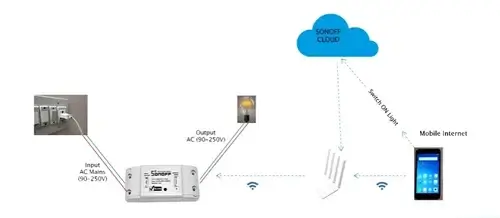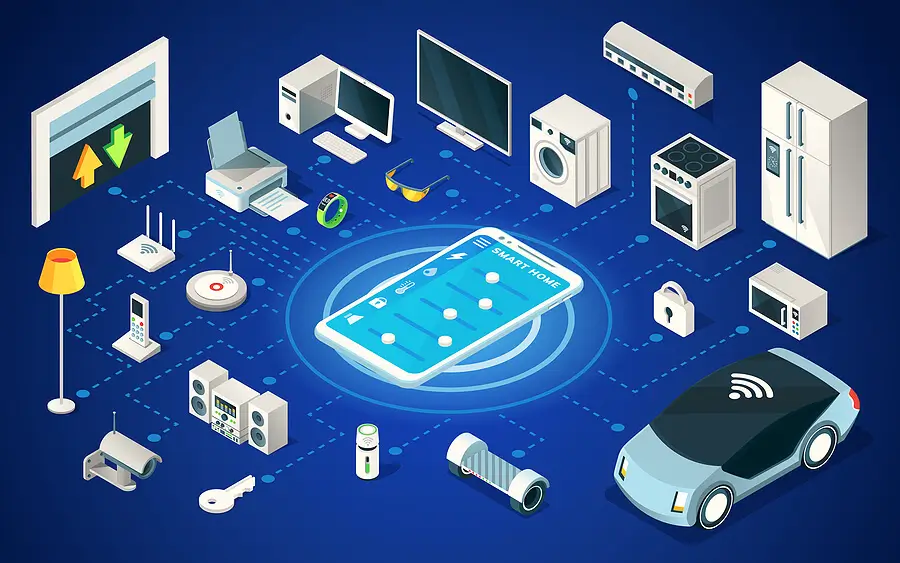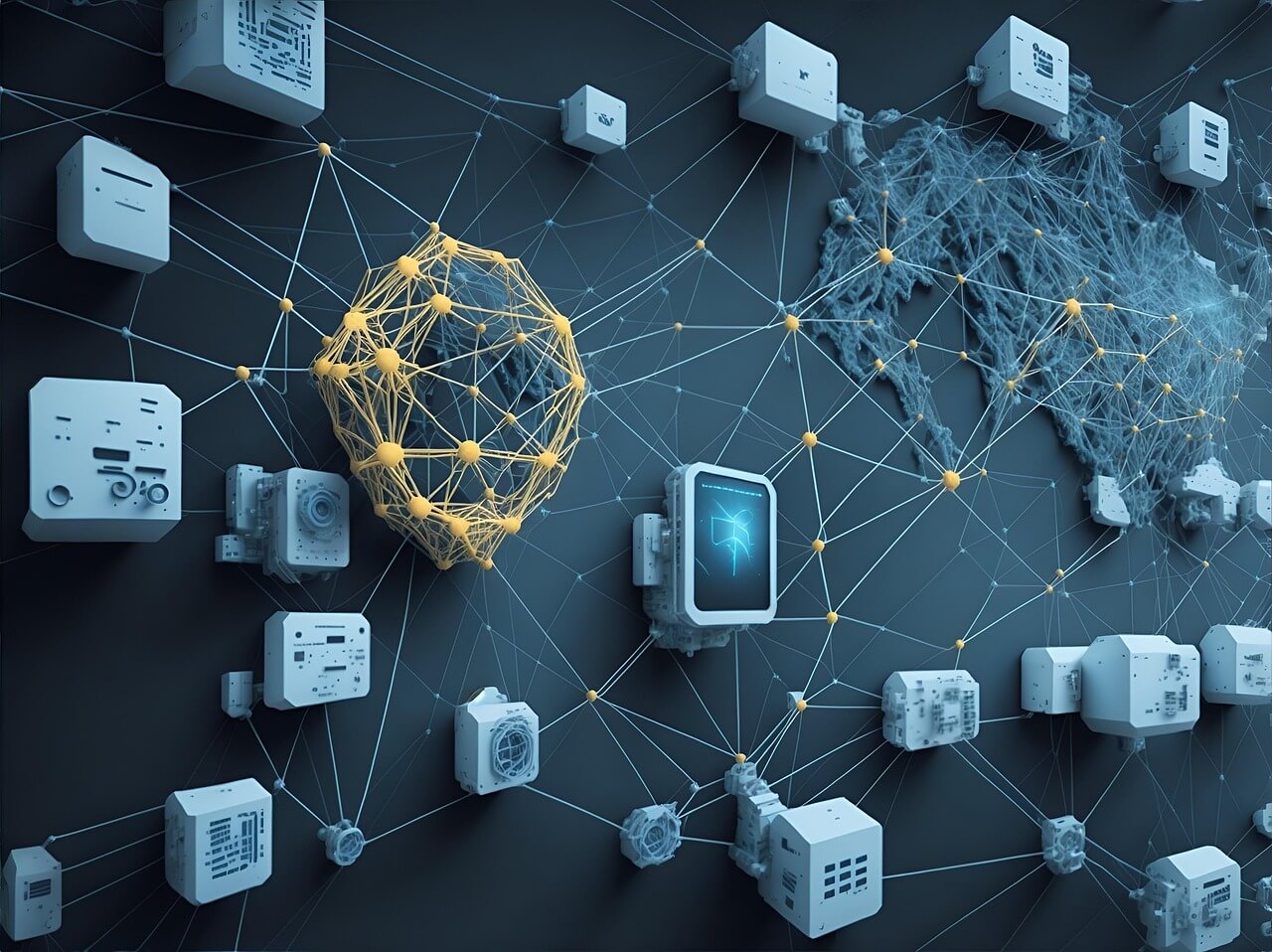The Internet of Things (IoT) may sound complex, but when you break it down into its core components—sensors, connectivity, and data—it becomes easier to understand how this revolutionary technology works. Whether you're a beginner or someone curious about smart devices, this blog will walk you through how IoT works step by step.
1. The Foundation: Sensors and Devices
At the heart of every IoT system lies a sensor or device.
a) What Are Sensors?
Sensors are the eyes and ears of IoT. They detect and measure physical properties from the real world, such as:
- Temperature
- Light
- Motion
- Humidity
- Air quality
- Pressure
- Sound
- Location (GPS)
For example:
- A thermostat uses a temperature sensor to monitor room heat.
- A fitness tracker uses motion sensors (accelerometers, gyroscopes) to count your steps.
b) Smart Devices vs. Dumb Sensors
Some sensors are passive and need external processors (dumb), while others include built-in microcontrollers or logic systems (smart). These devices can process some data locally before sending it.
2. Connectivity: The Digital Highway
Once the sensor collects data, it needs to send it somewhere—this is where connectivity comes in.
a) Common Connectivity Options in IoT
- Wi-Fi: Fast and widely available, but consumes more power.
- Bluetooth: Short-range, low power, ideal for wearables and home gadgets.
- Cellular (4G/5G): Great for mobile IoT devices and wide-area applications like vehicle tracking.
- Zigbee/Z-Wave: Used in smart home systems, low power, mesh networking.
- LoRaWAN: Long-range, low-power, suitable for agriculture and rural applications.
- Ethernet: Wired connectivity, reliable for stationary industrial IoT devices.
Each connectivity method has trade-offs between range, speed, power consumption, and cost.
3. Data Transmission: From Device to Cloud
Once a device is connected, it sends data to a central server or cloud platform for storage, processing, and analysis.
a) Data Formats
Data is typically transmitted in lightweight formats such as:
- JSON
- XML
- Binary streams
b) Protocols Used
- MQTT (Message Queuing Telemetry Transport): Lightweight, ideal for low-power devices.
- CoAP (Constrained Application Protocol): Specifically designed for resource-constrained devices.
- HTTP/HTTPS: Used in web-based applications, though heavier in bandwidth usage.
This step ensures real-time data availability and enables remote monitoring.
4. Data Processing: Making Sense of Information
The raw data collected is not always useful on its own. Once in the cloud or an edge device, it's analyzed and processed.
a) Edge Processing vs. Cloud Processing
- Edge computing involves processing data near the source, which reduces latency and saves bandwidth.
- Cloud computing centralizes processing power and storage, ideal for large-scale analytics.
b) Examples of Data Processing
- Filtering noise from sensor readings
- Detecting anomalies (e.g., sudden drop in temperature)
- Running machine learning algorithms
- Predictive analytics (e.g., when a machine might fail)
5. Action and Control: Responding Intelligently
Once data is analyzed, the system can take automated or manual actions.
a) Automated Responses
- A smart light turns on when motion is detected.
- A vehicle sends a maintenance alert when tire pressure drops.
b) User-Controlled Actions
- Users receive a mobile app notification to lock the door remotely.
- A dashboard displays energy consumption, and the user adjusts usage manually.
This step completes the loop—from sensing to action.
6. IoT Ecosystem in Real Life
Let's bring it all together with real-world examples:
a) Smart Agriculture
- Sensors detect soil moisture levels.
- Data is transmitted via LoRaWAN to a cloud platform.
- When soil is dry, the irrigation system automatically activates.
b) Connected Cars
- GPS, speed, and engine sensors collect data.
- Data is sent over 5G to cloud services.
- Drivers receive route optimization, traffic alerts, and engine diagnostics.
c) Smart Cities
- Traffic cameras and sensors gather vehicle flow data.
- Data is analyzed in real-time.
- Traffic lights adjust automatically to reduce congestion.
7. Security and Privacy Considerations
With so much data being collected and transmitted, security becomes a top concern in IoT.
a) Challenges
- Unsecured communication channels
- Weak passwords or outdated firmware
- Privacy concerns from constant monitoring
b) Solutions
- Encrypt data during transmission and storage.
- Use secure protocols (HTTPS, MQTT with TLS).
- Regular software updates and patches.
- Implement role-based access control.
8. IoT and AI: A Powerful Combination
When paired with artificial intelligence, IoT devices become even smarter.
a) Examples of AIoT (AI + IoT)
- Smart speakers that understand natural language
- Surveillance systems with facial recognition
- Industrial IoT systems that predict equipment failure
AI enables real-time decision-making, automation, and predictive insights.
9. Scalability and Interoperability
IoT systems must be scalable and interoperable to be truly effective.
- Scalability: Must handle an increasing number of devices and data volume.
- Interoperability: Devices from different brands should work together via common standards or APIs.
Open platforms and standard protocols help avoid fragmentation.
10. Summary: How IoT Really Works
Here's a quick step-by-step breakdown:
- Sensing: Devices gather data from the environment.
- Connectivity: Data is transmitted using communication protocols.
- Processing: Data is processed on the edge or cloud.
- Action: Systems take action based on analysis, either automatically or via users.
Understanding how IoT works is crucial whether you're a tech enthusiast, business leader, or student. As we move toward a more connected future, this foundational knowledge will help you explore deeper use cases and innovation opportunities.




